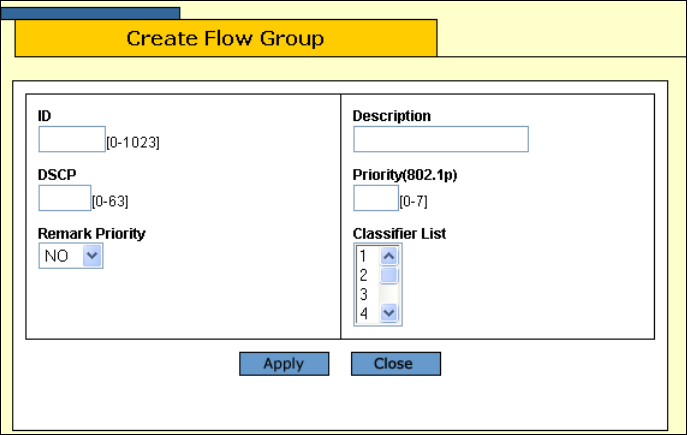User Manual
Table Of Contents
- Contents
- Figures
- Preface
- Section I
- Basic Operations
- Chapter 1
- Starting a Web Browser Management Session
- Chapter 2
- Basic Switch Parameters
- Chapter 3
- Enhanced Stacking
- Chapter 4
- SNMPv1 and SNMPv2c Community Strings
- Chapter 5
- Port Parameters
- Chapter 6
- MAC Address Table
- Chapter 7
- Static Port Trunks
- Chapter 8
- Port Mirroring
- Section II
- Advanced Operations
- Chapter 9
- File System
- Chapter 10
- File Downloads and Uploads
- Chapter 11
- Event Log and Syslog Servers
- Chapter 12
- Classifiers
- Chapter 13
- Access Control Lists
- Chapter 14
- Quality of Service
- Chapter 15
- Class of Service
- Chapter 16
- IGMP Snooping
- Chapter 17
- Denial of Service Defense
- Chapter 18
- Power Over Ethernet
- Section III
- SNMPv3 Operations
- Chapter 19
- SNMPv3
- Enabling the SNMP Protocol
- Configuring the SNMPv3 User Table
- Configuring the SNMPv3 View Table
- Configuring the SNMPv3 Access Table
- Configuring the SNMPv3 SecurityToGroup Table
- Configuring the SNMPv3 Notify Table
- Configuring the SNMPv3 Target Address Table
- Configuring the SNMPv3 Target Parameters Table
- Configuring the SNMPv3 Community Table
- Displaying SNMPv3 Tables
- Section IV
- Spanning Tree Protocols
- Chapter 20
- Spanning Tree, Rapid Spanning Tree, and Multiple Spanning Tree Protocols
- Section V
- Virtual LANs
- Chapter 21
- Port-based and Tagged Virtual LANs
- Chapter 22
- GARP VLAN Registration Protocol
- Chapter 23
- Protected Ports VLANs
- Section VI
- Port Security
- Chapter 24
- MAC Address-based Port Security
- Chapter 25
- 802.1x Port-based Network Access Control
- Section VII
- Management Security
- Chapter 26
- Encryption Keys, PKI, and SSL
- Chapter 27
- Secure Shell Protocol
- Chapter 28
- TACACS+ and RADIUS Authentication Protocols
- Chapter 29
- Management Access Control List
- Index

AT-S62 Management Software Web Browser Interface User’s Guide
Section II: Advanced Operations 157
Active
The active status of the flow group. A flow group is deemed active if it
is part of a policy that is assigned to a switch port. A flow group is
considered inactive if it is not a part of any policies or if the policies
have not been assigned to any ports.
Parent Traffic Class ID
The traffic class to which the flow group is assigned.
Classifier List
The classifiers assigned to the flow group.
4. Click Create.
The Create Flow Group page is shown in Figure 41.
Figure 41. Create Flow Group Page
5. Configure the following parameters as necessary:
ID
Specifies the ID number for this flow group. A flow group must be
assigned a unique ID number. The range is 0 to 1023.
DSCP
Specifies a replacement value to write into the DSCP (TOS) field of the
packets. The range is 0 to 63. A new DSCP value can be set at all
three levels: flow group, traffic class, and policy. A DSCP value
specified in a flow group overrides a DSCP value specified at the traffic
class or policy level.
Remark Priority
Replaces the user priority value in the packets with the new value
specified in the Priority parameter.










